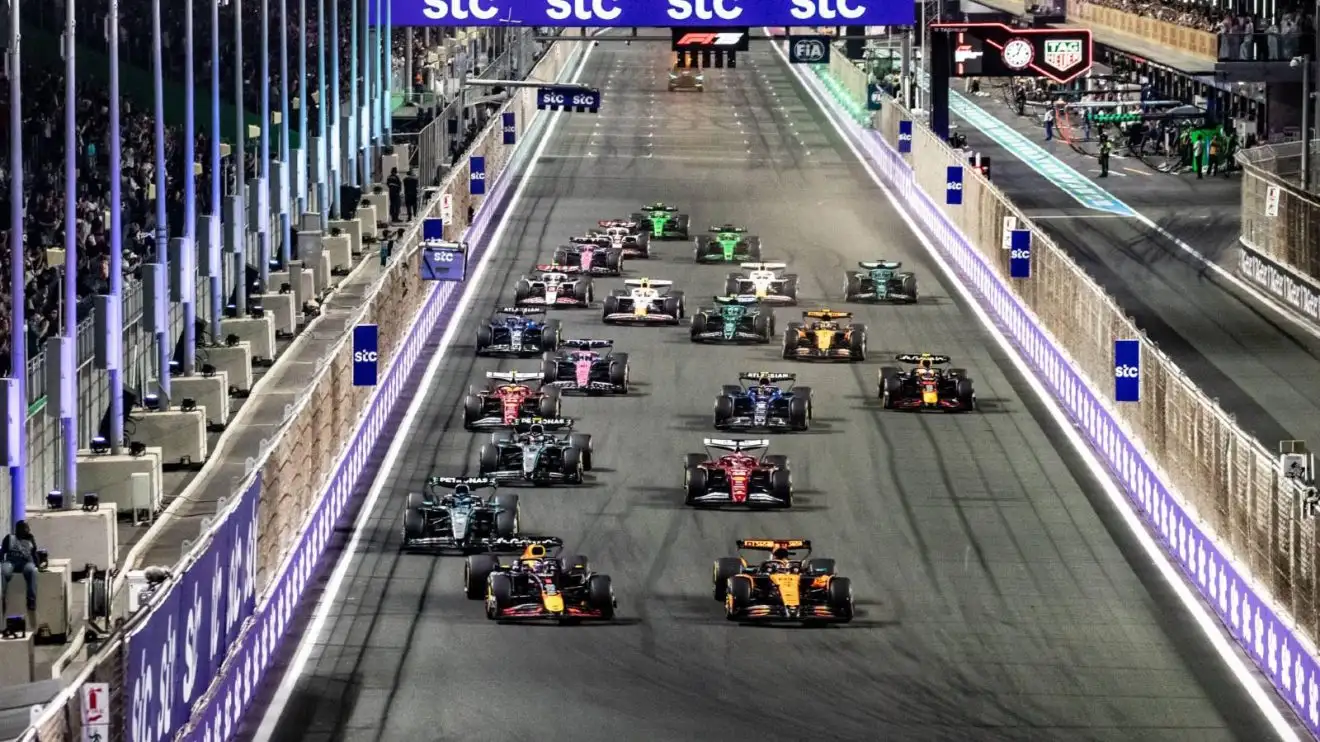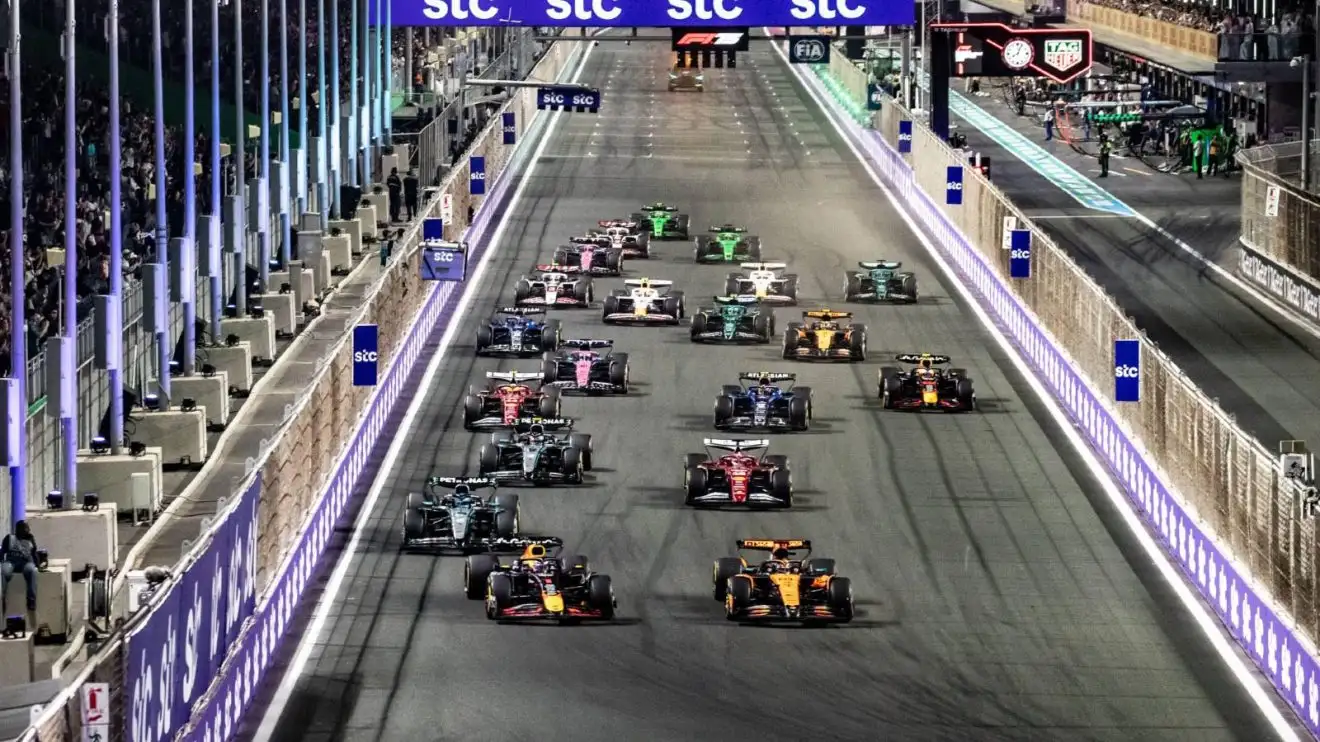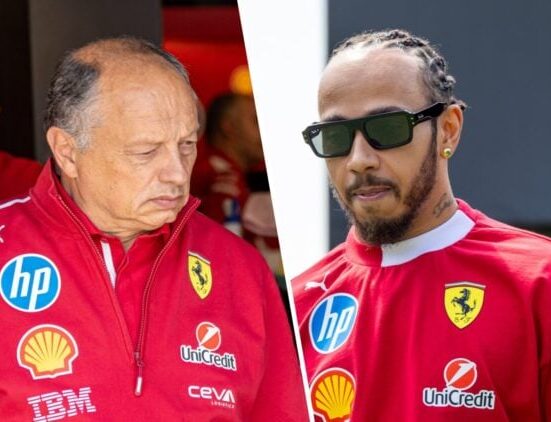Explained: Why F1 2026 engine rule changes are being discussed at F1 Commission meeting
24 Apr 2025 10:34 AM

The F1 2026 power unit regulations are up for discussion again at an F1 Commission meeting on Thursday.
The F1 Commission meets on Thursday to discuss possible changes to next year’s power unit regulations, after the mooted return to a V10 was shot down.
The possibility of next year’s engine regulations being changed hasn’t yet been completely ruled out, despite the recent decision to abandon the idea of pursuing a return to a V10 or naturally aspirated engine formula.
Why are F1 power unit regulations back in the news?
Ahead of the Bahrain Grand Prix, the proposal to examine a possible switch to a naturally aspirated V10 as an alternative to the currently defined 1.6-litre V6 hybrid power units was put before the members of the F1 Commission at a meeting.
With sustainable fuels on the horizon, the last-minute idea to abandon the hybrid power units to switch to a naturally aspirated PU such as the V10 – an engine architecture last used in 2005 – gained some realistic traction in just a few short weeks, which is thought to have been because of fears over just how much of a spectacle the upcoming power unit regulations will really provide.
Next year’s power units will keep the current 1.6-litre V6 hybrid formula, but will increase electrical energy output to 50 percent – the same amount as the internal combustion engine. The fear is that the cars may find themselves running out of battery energy deployment next season, particularly at circuits with fewer hard braking zones due to a lack of regeneration, meaning cars could actually slow down approaching the end of long straights.
The F1 2026 regulations have been the focus of concern for some time, with Red Bull’s Christian Horner voicing concerns two years ago about the possibility of ‘Frankenstein’ cars as the chassis and aero regulations have been written around the power unit for the first time in the sport’s history.
With those regulations now just a few short months away from hitting the track for the first time, the five power unit manufacturers having worked fastidiously over the past two years to create their new products, the proposal to abandon the regulations in favour of a naturally aspirated engine failed to gain much by way of support.
Sources indicated to PlanetF1.com that, of the five power unit manufacturers, three – Mercedes, Honda, and Audi – had no interest in moving away from the engine formula as currently defined, while two – Ferrari and Red Bull Powertrains – didn’t shoot down the idea, but also didn’t push for continuing the idea of a switch for F1 2026.
Following the meeting, Audi issued a statement to thank FIA President Mohammed Ben Sulayem for organising the meeting, saying, “Our aim is to help shape a sustainable and future-oriented form of motorsport that leverages cutting-edge technologies—benefiting not only Formula 1 but also Audi’s broader technological development which we see reflected in the 2026 power unit regulations.
“Audi remains fully committed to entering Formula 1 from 2026 onwards, with power unit technology built around three key pillars: highly efficient engines, advanced hybrid electrification, and the use of sustainable fuels.”
But the topic of the power unit hasn’t been put firmly to bed, yet.
On Thursday, the F1 Commission (ie. the teams, power unit manufacturers, FIA, and FOM) meets to discuss the possibility of refinement of the regulations, with a proposal put forward to reduce the electrical energy split for race conditions.
With the split currently at 50/50 between electrical and combustion power, the possibility of reducing the 350kW output down to somewhere like 200 or 250kW has been mooted – meaning the cars are less likely to use up all their electrical power down longer straights, although this would have an effect on a car’s ultimate laptime.
The introduction of an IndyCar-style ‘Push-to-Pass’, allowing for the use of the full 350kW, is also under discussion.
“Reading the agenda of the F1 commission is almost as hilarious as reading some of the comments that I see on Twitter on American politics,” Mercedes’ Toto Wolff told media, including PlanetF1.com, when asked for his stance on the proposals.
“I really want to protect ourselves and make no comment, but it’s a joke. Like a week ago, there’s an engine meeting, and then things like this end up on the agenda again.”
More on the FIA and F1’s governance
👉 Explained: How the FIA develops potential new F1 rules and regulations
👉 FIA explained: What does it stand for and how does it govern F1?
With Red Bull rolling out its first in-house power unit in F1 2026, having established Red Bull Powertrains to become a fully autonomous racing team in Formula 1, Horner said proposed changes to the regulations should have been addressed a long time ago.
“Mercedes seem very confident in the job that they’ve done for next year,” he said.
“I think that this is something that we asked to be looked at two years ago, and it’s not something that we pushed to be on the agenda this week at all.
“The FIA have gone away and done their research, and I think what they want to desperately avoid is a lot of lifting and coasting in the Grand Prix itself, which is going to be not particularly good for the sport and hugely frustrating for the drivers.
“So it’s not something that we’ve lobbied for or asked for and, if they’re doing it in the interest of the sport, then you’ve got to support it.
“There are certain circuits… and the problem is, the faster cars go through the corner, the bigger issue will be. The designers will always design cars that go quicker through the corners than the FIA think they will.
“So then that only compounds your problem. So I actually think what they’ve proposed, that you have a Push-to-Pass element in the race to deploy actually looks pretty sensible, but it’s something that obviously we should have ideally looked at two years ago, but still 10 months before we’re racing. I don’t see it as a major issue.
‘What is true is that we need to be open-minded on the situation, because it’s the first time that we have such a big change in the regulations, starting from engine and then chassis.
“We have to review everything. I’m open to discuss because we need to stay focused on what’s best for the future of Formula 1, not on who will gain a small advantage from 250 or 265 kW.
“In 5 years, we’ve completely changed the engine regulations, bringing electric power to 50 percent. We underestimated the consequences on weight and car performance, so we had to modify the aerodynamics, thinking for example about low-drag modes.
“But then there are the sporting regulations, which dictate how the engine power is delivered. We need to stay open and avoid arguments – that would be the worst scenario for Formula 1.
“The meeting in Bahrain went pretty well because we had an open discussion. The issue is that we are always in competition together. I mean that this is not helping the system. Let’s have a discussion this week, and I hope that we find a good compromise.”
As it stands, it appears the power unit manufacturers who signed up for F1 2026 on the currently defined regulations, ie. Honda and Audi, are not interested in any changes.
What has become clear in recent weeks, however, is that there appears to be a genuine fear the upcoming regulations changes will prove a damp squib and the placing of the cart before the horse in defining the engine regulations first, and creating the active-aero chassis regulations to suit, may have backfired.
Read Next: Follow PlanetF1.com’s WhatsApp and Facebook channels for all the F1 breaking news!










Leave feedback about this